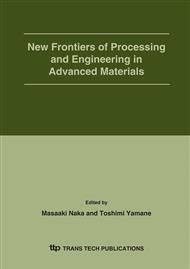p.7
p.13
p.21
p.27
p.33
p.39
p.45
p.51
p.57
Concurrent Coupling of Electronic-Density-Functional, Molecular Dynamics, and Coarse-Grained Particles Schemes for Multiscale Simulation of Nanostructured Materials
Abstract:
Feature sizes of useful electronic devices are becoming smaller and reaching nanometer ranges. There is increasing demand to perform dynamic simulations of such nano-devices with realistic sizes. To date, various kinds of simulation methods have been used for materials and devices including the density-functional theory (DFT) and the molecular dynamics (MD) for atomistic mechanics and the finite element method for continuum mechanics. We review recent progresses in our multiscale, hybrid simulation schemes that combine those methods. The coarse-grained particles (CG) method originally proposed by Rudd and Broughton [Phys. Rev. B58 (1998), p. R5893] has features suitable to such hybridization. We improve the CG method so that it is applicable to realistic nanostructured materials with large deformations. A novel hybridization scheme that couples the DFT method with the MD method is presented, which is applicable to virtually any selection of the DFT region in a wide range of materials. Hybrid DFT-MD simulations of the H2O reaction with nanostructured Si and alumina systems under stresses are performed, to demonstrate significant effects of stress on the chemical reaction.
Info:
Periodical:
Pages:
33-38
Citation:
Online since:
December 2005
Authors:
Price:
Сopyright:
© 2005 Trans Tech Publications Ltd. All Rights Reserved
Share:
Citation:


